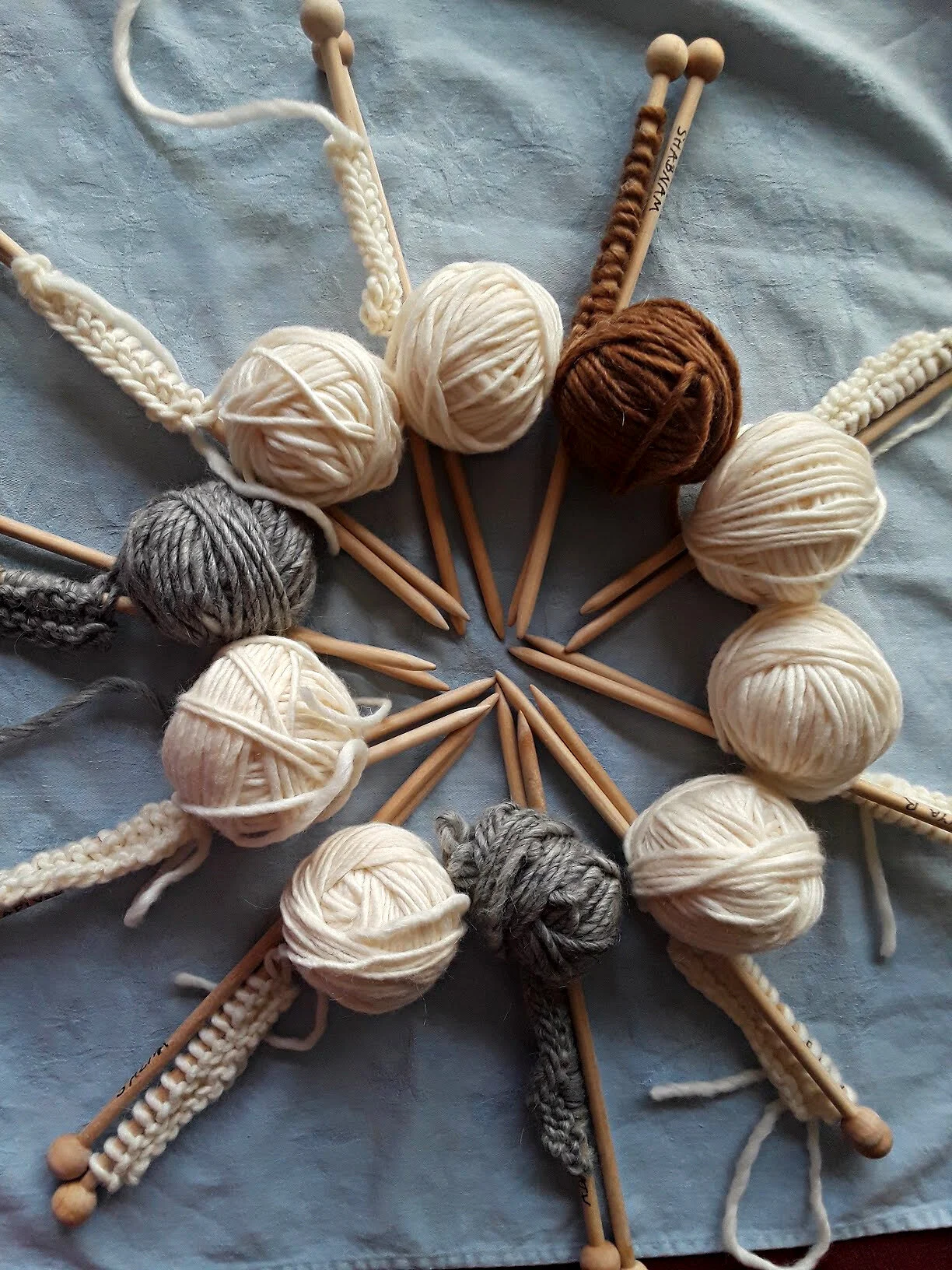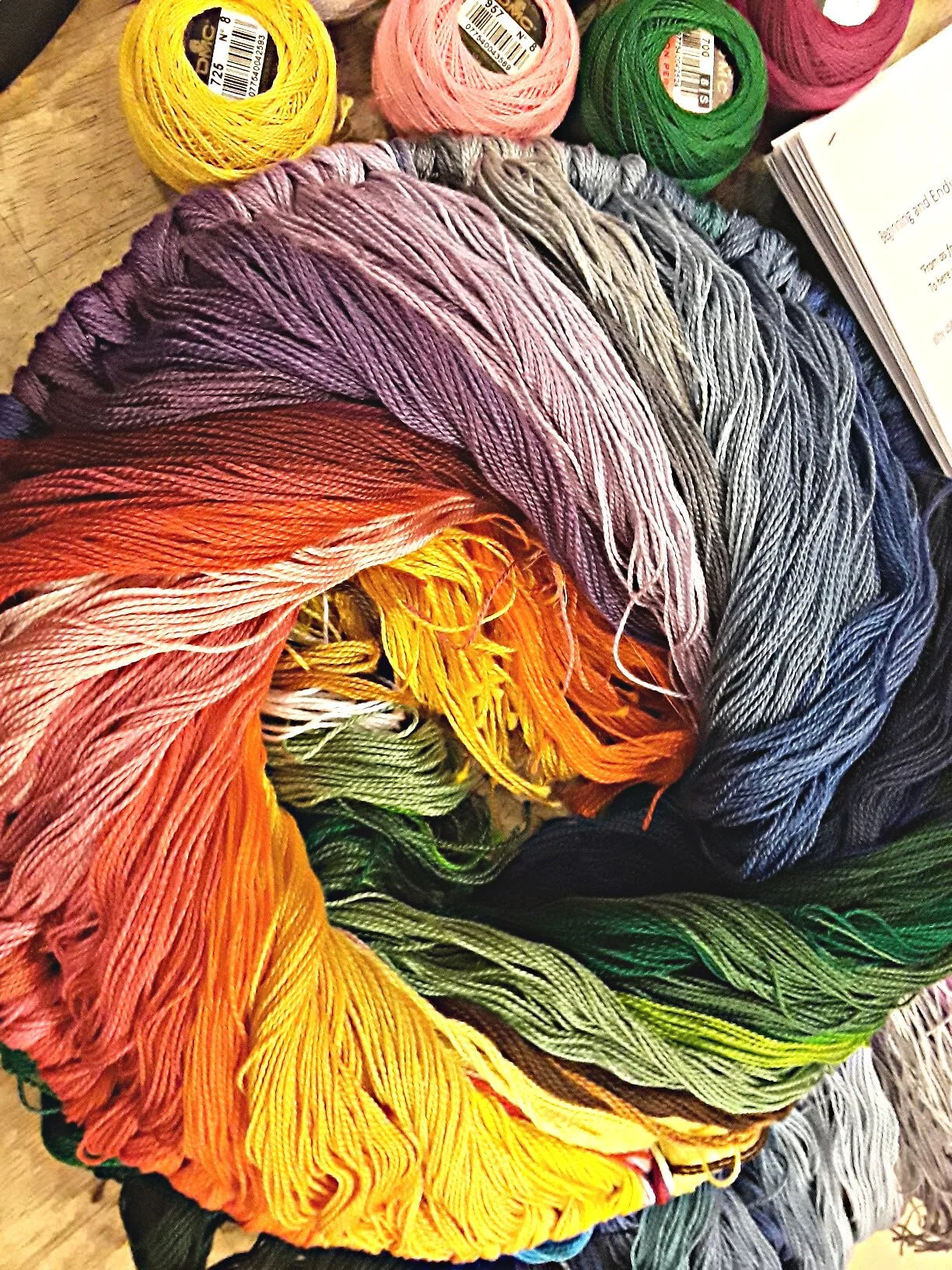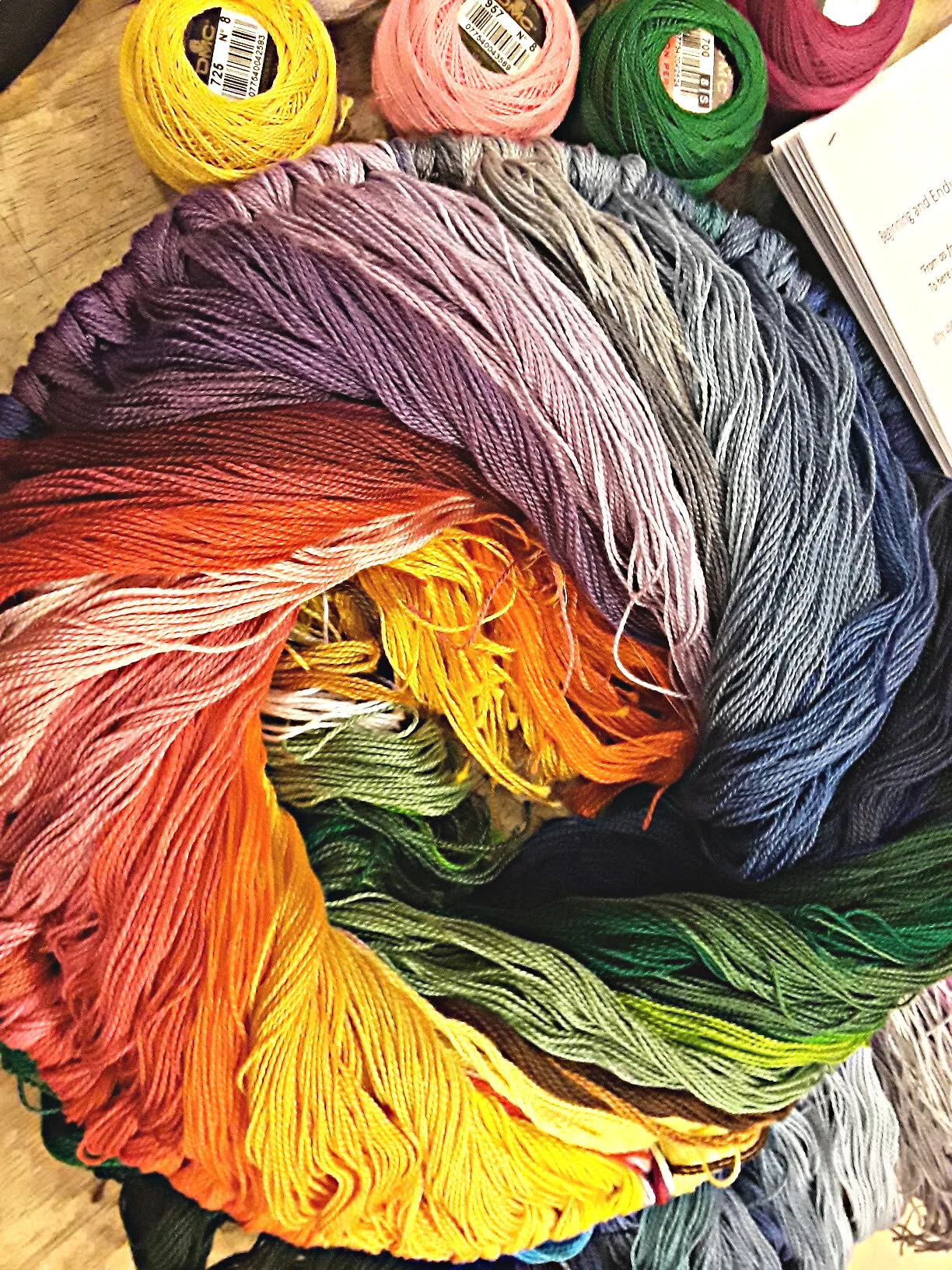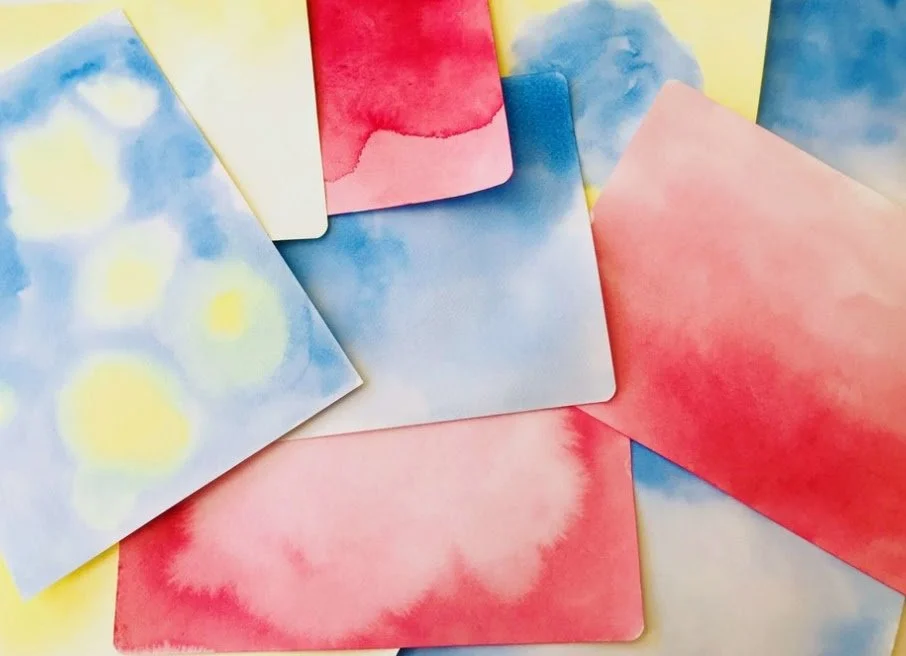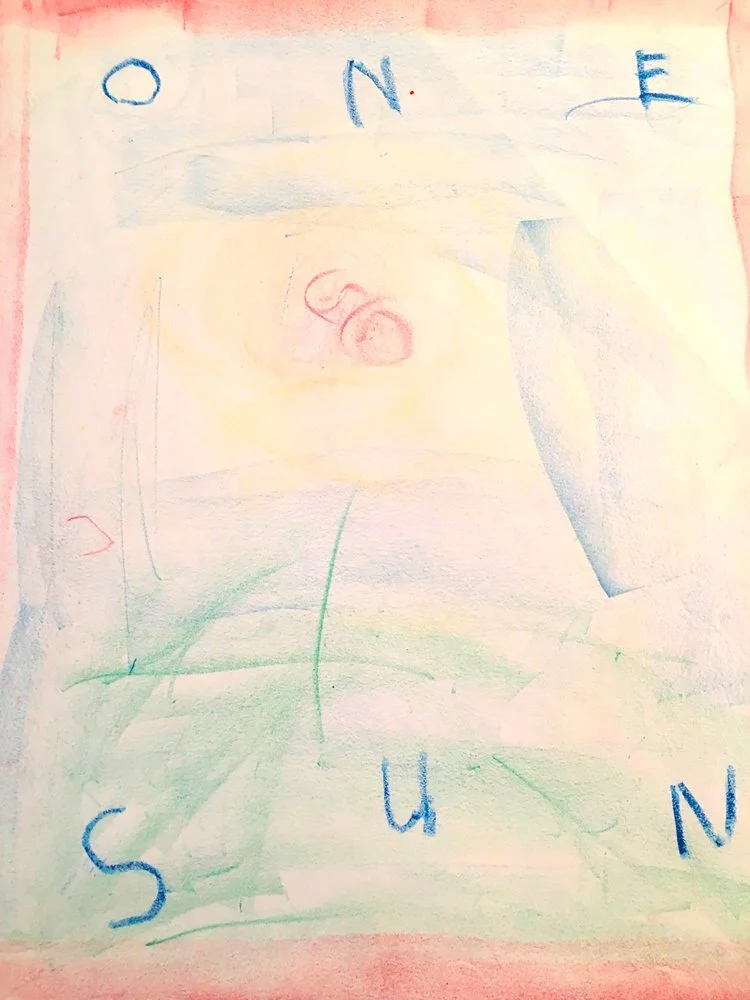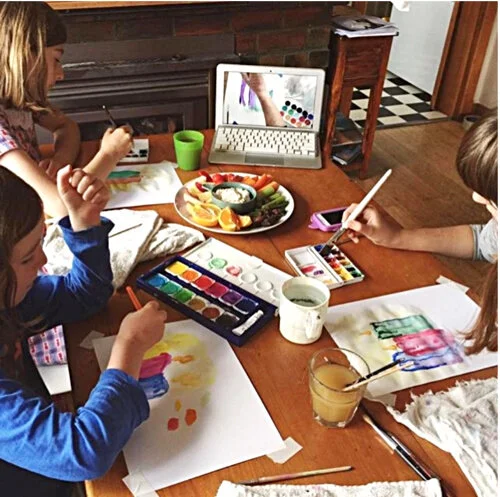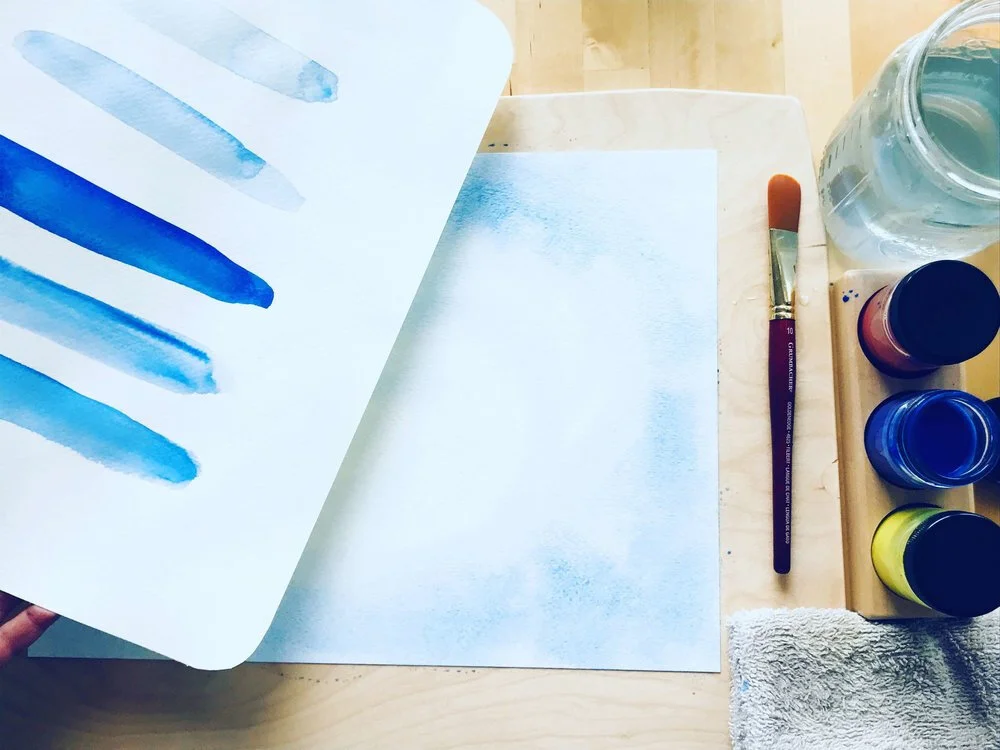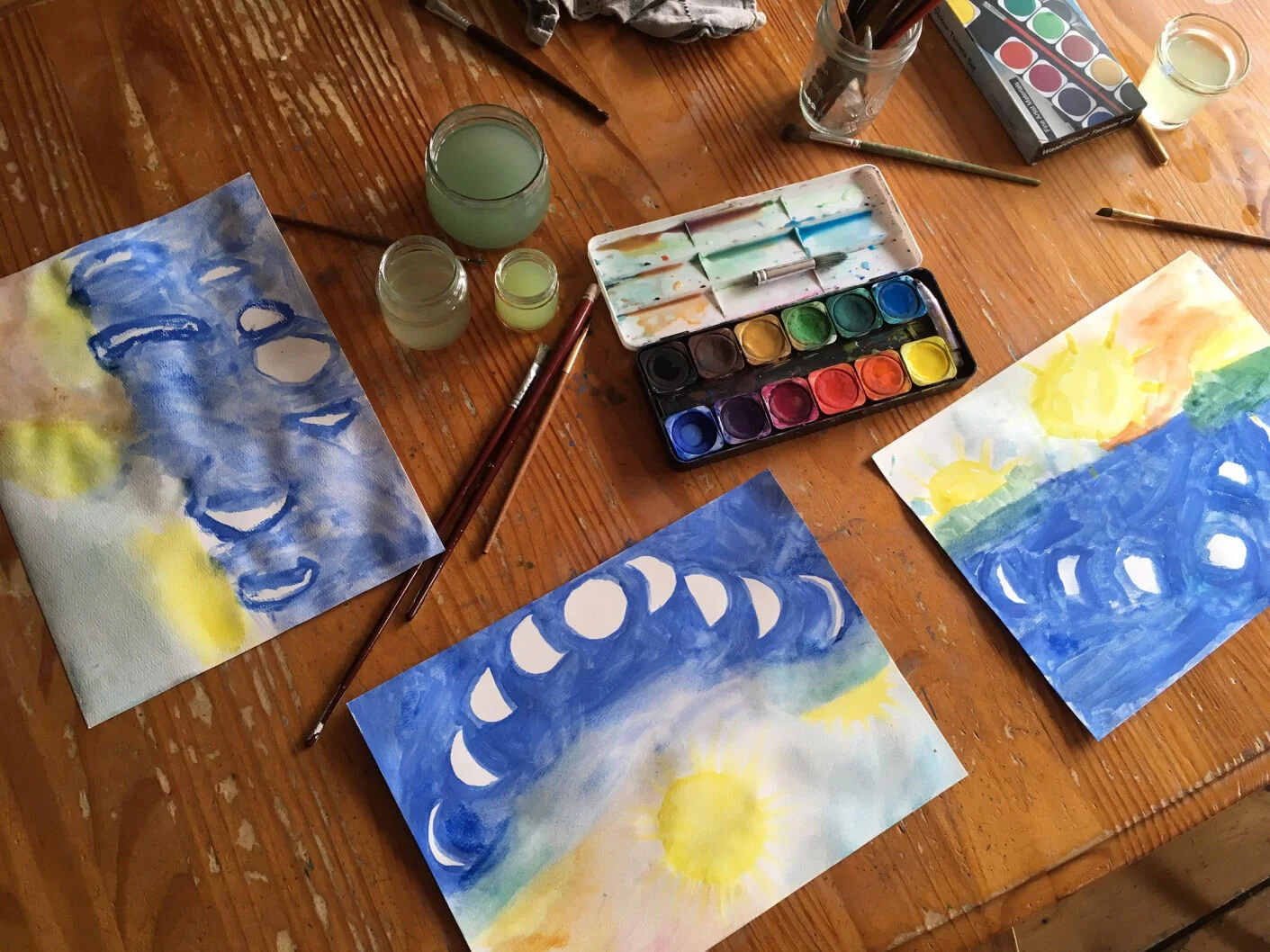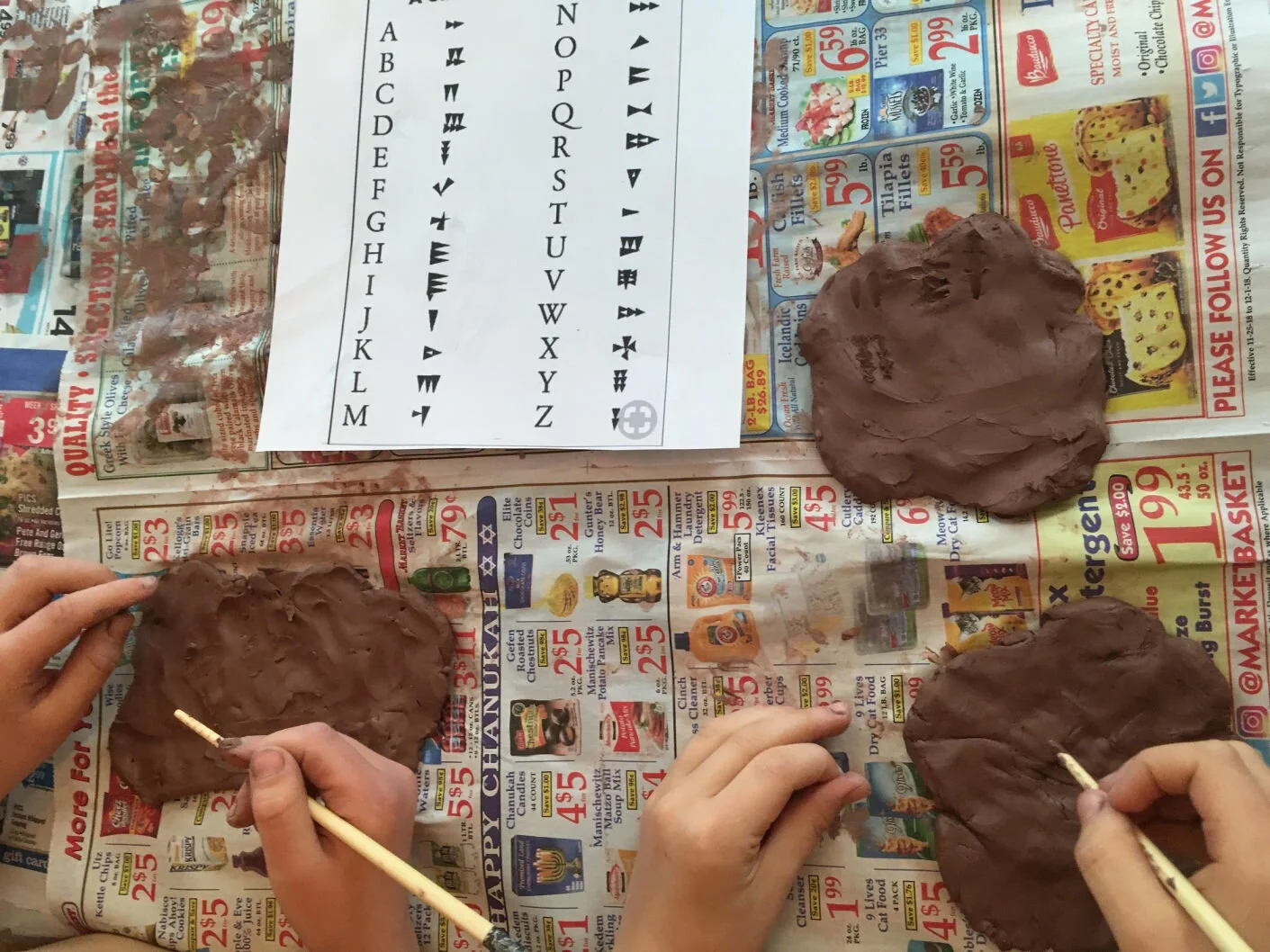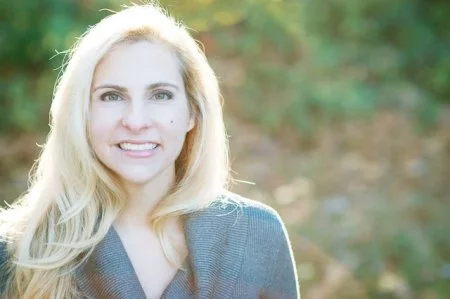
Waldorfish Blog
Beginning and Ending Verses in Handwork
We’re excited to share the second of 3 guest posts from author, educator, and all around amazing human, Elizabeth Seward! Elizabeth brings decades of experience, and will be sharing her insights into Waldorf handwork.
Verses bring a sense of beginning and closing to a handwork class.
Why use handwork verses?
“From as far as the stars
To here where I stand ...”
Many teachers and homeschooling parents ask for verses with which to start and end a class. There are many, and I will share why and how I select verses, and share some criteria for my selection. The best verses speak to you directly; you can picture yourself and your students speaking together; and they offer lasting value.
(Missed part one? Click here!)
Handwork is all about beginnings and endings: cutting and finishing a thread; changing color in striped knitting or crochet; cutting fabric for an animal, then closing the last seam. Ideally, these transitions are calm, firm, neat, and orderly.
Handwork classes give us endless opportunities to coach our students in ways of beginning and ending, and this will spill over into other areas. Life itself is all about beginnings and endings.
To many people, verses can seem artificial, too ‘holy’, stilted, and an imposition on the freedom of others. I also had trouble recommending verses to others for the same reasons. In ‘old school’ traditions, we were expected to write our own verses, as these would be the most authentic to share with the particular students in front of us, heart to heart. Just in recent years, I have overcome these objections, and teaching both in large classes in a school setting, and teaching smaller homeschooling classes, I have found great worth in beginning and ending a class with an appropriate verse. I now recognize the value for the class as a whole, for the individual student, and for me personally.
“Speaking a verse together affords us all a moment of quiet reflection, and a chance to recognize, however subtly, that we are entering into a different space and time set aside for a specific purpose.”
What could verses do for your handwork sessions?
On a practical level, it allows me time at the beginning of a class to take the measure of the group as a whole, and to identify children who may need a little extra attention, oversight, or encouragement that day. I can gauge how smoothly the class will progress, and begin to shift my plan to more stories, more movement, more quiet, or whatever is needed to ensure a successful class.
On a deeper level, it allows the children to shift focus from whatever they were doing before handwork, allowing a breathing space, just as it does at the end, preparing for the next class. It’s important for each teacher to be aware of the students’ whole day, giving the students the experience that teachers work as a team, an integrated continuum, a circle of care surrounding the children. This provides an authentic experience that education is part of an integrated whole, and not fragmented. Awareness of their other classes is demonstrated by coming to a calm close at the agreed time, and our colleagues’ need for starting their class in an orderly way. This also applies to homeschooling. Adhering to the proposed timetable for the day - within reason - shows that one subject is not implicitly valued above another; that we honor all parts of the curriculum, because as educators we honor each part of the human being. Head, heart, and hands are one unified whole.
What verses or poetry inspire you?
Choosing handwork verses
Both the form and the content of the verses are crucial. I like to use verses that remind us about purpose, individual path, community, and the meeting of the seen and unseen in each moment of individual creativity. The rhythm of the words is very important. Avoid mindless hammering or unthinking floatiness. The meaning of the words should be clear, and you will have to refresh this occasionally. Using appropriate gestures in the early grades prompts the memory and enlivens their speech. In a public charter school or mixed homeschool setting, I would talk about ‘stretching verses’ so there was no suggestion of inappropriate spirituality. Avoid falling into the trap of staying too long in the land of cute little fairies and gnomes. Perhaps this is acceptable in the first half of first grade, as a bridge from early childhood, but move forward.
Don't allow yourself to get root-bound! Use ‘real’ poetry from about 6th grade on.
“Your task as a teacher or parent is to be sure they are secure in where they are (give them roots) but also help them to find the courage to fly (give them wings). ”
I have found that certain phrases will stick with the children, sometimes for an astonishingly long time. For example, I used to bring classes to a close with “time has flown on the wings of an eagle” and now there are several 40 year old former students who have quoted this back to me. If we can use high level, beautiful, language, rich in healthy imagery, this will affect the students deeply.
“Verses” don’t have to be spoken; songs or even wordless melodies are a wonderful way to begin and end a class.
Enjoy the process of incorporating verses into your handwork class- it's all worth it!
Using handwork verses
Check first with any teacher colleagues that your verses are not overlapping. Each teacher has a different approach to each verse, and this will be subtly unsettling and confusing for the children.
Search for verses and poems online (or on pinterest), ask colleagues, or adapt or write your own. These will resonate most strongly with you and with the children in your care.
You must know the verse solidly by heart first, or they will never speak it securely.
You must be consistent. If you accidentally change a word, the class will always stumble there. Experience speaks here.
Children learn much more quickly than adults; have them jump in when they can, but insist on clarity and meaning in their speech.
Gestures can be helpful, effective until about 3rd grade, and helpful in the learning process. It’s easier to learn by heart while you are moving.
Occasionally designate a student as ‘leader’ for a verse. You will learn a great deal by observing them, and this will reflect to you how effective and clear your expectations have been.
If you have incorporated gestures with the verse or song the students have learned, ‘speak’ it silently. This strengthens the memory and deepens the imaginative pictures.
Using verses to hold the space for calm and orderly beginnings and endings to a class is a cornerstone of class management. People who sing together, breathe together, speak together can also be silent together and can work well together.
“Our time for now has ended,
Our work for now is done, …”
Related content:
Elizabeth Seward, PhD has been in a Waldorf classroom since 1984 as a parent volunteer, handwork assistant, High School teacher, lead handwork teacher, class teacher, and teacher educator and mentor.
For three years, Elizabeth co-directed the teacher preparation program in Los Angeles (WISC) and opened the San Diego program. She was a member of the Advisory Board and a contributing editor to Living Crafts magazine for six years. Since 2013, she and a colleague have been offering annual “Wonder and Wisdom of Handwork” conferences in retreat settings for teachers, and in recent years, have expanded to include a July conference for homeschoolers.
In 2019, Elizabeth published her first book in a series of three for handwork teachers, classroom teachers and home-schooling parents: Teaching Through Stories: Jane and Jeremy Learn to Knit (forthcoming are “how to spin”, and “how to sew”). Elizabeth earned her doctorate from Claremont Graduate University in the historical and philosophical foundations of education in May 2005. She holds an M.A. in Second Language Learning, and an interdisciplinary M.A. in Spirituality and Education (2018). Her thesis: “Knitting: A Gateway Contemplative Practice.” Elizabeth’s three children attended Waldorf schools in the US and Germany, and her four grandsons are thriving as they begin their Waldorf journey.
She teaches knitting, spinning, and other textile arts to ad hoc community groups, and shares her enthusiasm for Waldorf Education with parents of young children, home-schooling parents and graduate students. For information about her book and more —>
1st Grade Handwork curriculum (online!)
Instagram: @elizabethesewardhandwork
Website: elizabethsewardauthor.com
Why is Waldorf Handwork So Important?
We’re excited to share the first of 3 guest posts from author, educator, and all around amazing human, Elizabeth Seward! Elizabeth brings decades of experience, and will be sharing her insights into Waldorf handwork.
Handwork takes its place alongside every other subject in the Waldorf curriculum in uniting head, heart, and hands.
Handwork brings color and vibrancy to Waldorf education!
The process of using these materials, the sensory pleasure of bathing in texture and color to create practical and beautiful items, is inspiring, and nourishes the heart and soul. Handwork gives students (and teachers!) a well-deserved sense of accomplishment, and provides a valuable balance within the framework of education, whether in a conventional classroom or at home. Handwork is a valuable complement to academics. During the rhythm of the day, a period of attentive focus on individual handwork can contribute to a ‘breathing’ rhythm – part of the pendulum swing between academics and practical work, receptive and active learning. At every stage of life, working with your hands provides significant stress relief.
Practical arts provide us with a unique experience: in making something from the simplest of natural raw materials, we develop a powerful sense of agency; we and the children implicitly transcend the mundane and step into a deeper relationship with the world around us.
Creative activity mediates between seen and unseen realms: something from individual imagination or inspiration is brought from immaterial realms into physical reality, and something from the material world is transformed through being “worked” in order to approach the craftsperson’s intended goal. In a corresponding and reciprocal way, transforming the material also transforms and schools the craftsperson.
Most obviously, hands are at work, but students consider and plan their project, learning to think in 3 dimensions (then 4 dimensions in High School craftwork). Through striving for beauty in form and color, students develop a heart-felt relationship with what they are making, especially if the fruits of their labors are beautiful, truly functional, and perhaps given as a gift.
“Handwork supports the foundations for academic skills: two hands working together teams together the two sides of the body and the two hemispheres of the brain. ”
This establishes and strengthens all–important new perceptive and cognitive connections; smooth eye-tracking and visual pattern recognition are fostered; eye-hand co-ordination and fine finger movement are developed. Focus and concentration are required, as are perseverance, planning, and attention to detail.
Beautiful creations from Waldorf handwork curriculum.
It has been well documented since at least the mid to late 20th century that fine finger dexterity builds brain synapses and fosters cognitive development. Working with your hands also means the world is literally no longer held at arm’s length; handwork requires a close engagement with natural materials, differentiating between wool and cotton, for example. Sharpening observational skills and perception, the sense of immediate and intimate belonging is cultivated and fostered. Handwork imparts a powerful, implicit message of interconnectedness and interdependence with the environment.
In addition, contributing to others’ well-being by producing a beautiful or functional item by hand connects the craftsperson to other craftspeople engaged in the same work throughout history and through many other cultures. Seeing a sheep being shorn, learning about wool, and observing a spinner at work are valuable experiences, but deeper and more meaningful learning is achieved if a student has the opportunity to handle the wool, to spin their own yarn, and to make something useful from it, just as so many spinners for thousands of years have done.
“Each craftsperson weaves themselves intimately into the fabric of history and society. Children who engage in practical arts learn unequivocally that their actions have meaning and consequences, and feel empowered and invigorated/ enlivened as they begin to take their place working alongside trusted and admired adults. ”
Research at the Hiram Trust in England has documented the value of training high-risk youth in traditional crafts, even dangerous crafts such as glass-blowing. They found that the sustained focus and obvious and immediate consequences led to more sound decision-making and improved life choices, extending beyond the immediacy of the craft itself into seemingly unrelated areas. The self-correcting nature of physical craftwork gives immediate and tangible feedback. Sustained attention and deferred gratification are closely linked to impulse control, which is learned through the inherent lawfulness imparted through learning crafts. Impulse control and delayed gratification are closely linked to later academic success.
Knitting curriculum often beings in first grade, and provides a multitude of benefits to the growing child.
The innate lawfulness of choosing the right material for a task leads to an experience of security in the physical world, and a sense of belonging and efficacy. Steiner maintained that this experience of understanding what is fitting and appropriate in a practical way in childhood translates in later life into a sense for what is true and moral, and supports the ability to make principled and ethical decisions.
There is much more to handwork, though, than the physical and practical reasons, and my years of teaching experience, as well as modern research, continuously peel back more layers of wonder and wisdom. There is yet another dimension beyond brain development, environmental integration, pragmatism, and self-esteem. Engaging in focused creative activity such as knitting, sewing or spinning, children and adults come to a quiet focused place within themselves. They can find inner quiet and calm. This is a great stress-reliever and can be a precursor or a placeholder for future contemplative practices.
Handwork brings so much to the child's educational experience- including fun!
Handwork combines practicality and artistry, nourishing the soul with the beauty of texture, color, and form, and preparing students not only for academics, but more importantly to take up meaningful work and find their own unique place in society. In thinking through and making a plan, in selecting the right materials, and in carrying the one-of-a-kind project to completion, the craftsperson steps into a co-creative space.
Through handwork, an individual craftsperson’s thinking and active work become the meeting place between the inspiration of unseen spirit and tangible matter.
And it’s fun!
Elizabeth Seward, PhD has been in a Waldorf classroom since 1984 as a parent volunteer, handwork assistant, High School teacher, lead handwork teacher, class teacher, and teacher educator and mentor.
For three years, Elizabeth co-directed the teacher preparation program in Los Angeles (WISC) and opened the San Diego program. She was a member of the Advisory Board and a contributing editor to Living Crafts magazine for six years. Since 2013, she and a colleague have been offering annual “Wonder and Wisdom of Handwork” conferences in retreat settings for teachers, and in recent years, have expanded to include a July conference for homeschoolers.
In 2019, Elizabeth published her first book in a series of three for handwork teachers, classroom teachers and home-schooling parents: Teaching Through Stories: Jane and Jeremy Learn to Knit (forthcoming are “how to spin”, and “how to sew”). Elizabeth earned her doctorate from Claremont Graduate University in the historical and philosophical foundations of education in May 2005. She holds an M.A. in Second Language Learning, and an interdisciplinary M.A. in Spirituality and Education (2018). Her thesis: “Knitting: A Gateway Contemplative Practice.” Elizabeth’s three children attended Waldorf schools in the US and Germany, and her four grandsons are thriving as they begin their Waldorf journey.
She teaches knitting, spinning, and other textile arts to ad hoc community groups, and shares her enthusiasm for Waldorf Education with parents of young children, home-schooling parents and graduate students. For information about her book and more —>
1st Grade Handwork curriculum (online!)
Instagram: @elizabethesewardhandwork
Website: elizabethsewardauthor.com
Starting Waldorf First Grade
Let’s talk all things first grade!
In Waldorf education, there is so much emphasis placed on the transition from kindergarten to first grade, and in many ways, it’s for good reason! The child is ready to transition into the grades, and with that comes a need to approach things a little differently: structure, routine, storytelling, academics, art, and everything in between!
Feeling a little overwhelmed already at how to do it all, and keep yourself sane? We can help.
First, take a nice, deep breath.
Know that you don’t have to do ALL. THE. THINGS. to make a Waldorf grade one curriculum work for you and your child! (And if you’re totally new to homeschooling, click here!)
Start here with our resources and courses; they provide a wealth of information, guidance, and content to support your first grade planning! You’re not alone in this, we promise :)
Let’s get started!
Let’s start at the beginning: what is first grade art curriculum? What kind of artistic experience will the children enjoy in first grade, and what role does the educator play in creating a beautiful and supportive learning space?
We’ve put together this piece as a starting place for you - we’ll be answering frequently asked questions about Waldorf art in first grade, and providing you some helpful resources to help make your artistic journey doable, meaningful, and fun!
Painting with your first grade child can be a truly rewarding and enriching experience, and it’s easy to get started! Amanda Mercer (our amazing course creator!) and Robyn Wolfe (Waldorfish All-Things Creator) have written a piece that walks one through the “whys” of first grade painting; it’s all about creating a meaningful experience (while keeping it simple, - and who doesn’t love that?!)
“Painting lessons create opportunities for students to develop an intimate understanding of the colors through their imaginations, movement, and imitation. When the teacher brings the lessons in partnership with short verses and stories...the children live into each experience fully. ”
First grade form drawing can be incorporated seamlessly into your weekly curriculum. Need an introduction to form drawing in general? Rev Bowen, our form drawing course creator, has written the perfect post to get you inspired, and to get you started!
“The forms themselves, as finished works, may become beautiful, but they are not nearly as important as the processes through which we explore and embody the movements. Form drawings, as finished pieces, are merely the footprints left in a medium such as pencil on paper, evidence of the wonderful movements of the human being and the cosmos. Form drawing, as a practice, can be an essential path of human development.”
Children learn in many ways (through movement, music, and poetry…to name a few!) but one of the key ways a first grader learns is through the ancient art of storytelling!
Traditional first grade Waldorf curriculum uses stories to introduce each letter in the alphabet, each number, and many other aspects as well. Stories create connections, context, and enliven education in a very real way!
Now, you may be saying to yourself, “But I don’t know any stories!” or cringing at the idea of memorizing a fairy tale everyday for a lesson…
Here’s the thing: You already are a storyteller! Seriously!
Our dear friend Sara Renee Logan has written a series of posts that are sure to inspire, empower, and give you the confidence to start incorporating your own stories and others into your weekly routine. Trust us; you’ve got this!
We love all things art (can you tell?) and have been reminded time and time again of its value when it comes to enlivening academics with all things artistic.
Have you ever wondered where this approach comes from, and what, exactly, art does for a growing child? Our friend Cristina Havel has written a resource for you, illustrating the true impact of artistic curriculum in Waldorf education.
“Artistic endeavors sharpen two very important human skills: the ability to shape, or see, and the ability to perceive, or distinguish. When practiced over time using diverse techniques across a variety of subjects, something very special emerges: the ability to shape and perceive new ways of looking at the world.”
Waldorf Art for Beginners
First grade art curriculum can include many things: crayon, pencil, watercolor painting…so many options and fun mediums to choose from!
But, are you feeling a little stuck? Like there are too many decisions and things to figure out to incorporate art into your weekly rhythm?
We’ve got you covered! Check out our Waldorf Art for Beginners course; not only does it include a variety of techniques and mediums to work with, each lesson provides in-depth guidance and instruction; perfect for those just starting out!
Grade One Painting Course
Watercolor painting curriculum in first grade is truly unique, incredibly special, and completely doable for you to do at home with your child! It’s true!
Amanda Mercer, a Waldorf-trained teacher (and overall cool human) has created a truely supportive course for those wanting to bring watercolor painting to their first grader. Not only do the lessons include original verses and step-by-step guidance, they also show how to cultivate a calm, encouraging, and experiential mood with each progressing lesson.
Why wait to get started?
Click here for a free sample from Grade One Painting!
Does making form drawing a part of your weekly first grade rhythm sound... Exciting? Daunting? A little bit of both?
Remember, you don’t have to do all the things yourself; let us handle the form drawing curriculum for you!
Rev Bowen, a master Waldorf teacher, has created a course specifically for the first grade child that guides you through the ins and outs and hows and whys; everything you need to bring this rich Waldorf homeschool curriculum into your rhythm and routine!
Click here for a free Form Drawing Lesson!
Questions about any of these resources? You can contact us, here. We’d be honored to be part of your first grade year!
Waldorfish Families - Cheyenne Patterson
Every few weeks on the blog, we spotlight a Waldorfish community family. You are a diverse and global group! We’re pretty sure you’d be bff’s in real life. Today, please enjoy our conversation with Cheyenne Patterson!
(And don’t forget- we’re here for you! If you’re like some support in your homeschooling journey, click here!)
TELL US ABOUT YOURSELF!
I'm a homeschooling mom to Renzo 11, Tre 9, and Penney 6, and wife to Joel. I have always felt like a bit of an anomaly as a super crunchy, health food store owning, Waldorf loving, ballet dancing, artsy, creative, Christian.
HOW DOES YOUR FAMILY START THE DAY?
Our mornings are slow and quiet, the most the peaceful time of day for sure! We are a late family, between the late night dance classes and performances and my husband working late at our store, we tend to do late dinners and late bedtimes. Thankfully the kids are really great at playing quietly or reading until everyone is up and ready for activity. Some mornings we make a big breakfast, but I’ve also gotten the kids in the habit of making their own breakfast on the mornings that I juice. Then we gather to make our plans for the day.
My kids really appreciate a written list of expectations for the day, including both school work and chores. This is also the time of day that we go over any outside-the-home-plans or activities. For years, we would then move on to circle, but as my crew is getting older I’m struggling a bit to settle into what works. We seem to be transitioning to a singing and devotional time for everyone, then first grade movement or song, which my boys surprise me just often enough by jumping in and wanting to join in!
GIVE US A SNAPSHOT OF ANY MANAGEMENT/ORGANIZATIONAL STRATEGIES THAT ARE HELPING YOU FLOW THROUGH YOUR HOMESCHOOLING DAYS.
This year I’ve got three kids in the grades, and although it is different than the year of juggling babies and toddlers with school, it is still a juggle all the same! I find the more we can combine lessons and find overlap the smoother our days go. My fourth grader is equally passionate about ancient history and sciences as my sixth grader, so I only need to alter the length of their writing assignments.
My daughter, on the other hand, really needs her time with fairy tales and the foundations of academics, so I have to be careful to fill her bucket. As far as organization, I have tried quite a few methods. Last year, I printed out everything we would need for the year from various curriculums and online resources, and had my own open-and-go curriculum. It was, in many ways, lovely, but I still tweaked it and rearranged it so much that I'm back to my tried and true classic of just making lists.
The lists for first grade are simple, lists of letters with stories and ideas, lists of math games, lists of read alouds and handwork and art projects. For the boys there are lists of books and projects for each block. Then I have always kept a very informal mental check list for full school days to includes the three R's (reading writing and arithmetic) and something beautiful. If the three R's aren't covered in main lesson, then we will cover them in short independent review for my older ones, and in games or songs in the younger grades.
Using lists works well so that school can happen around living life. We can enjoy good weather days and say yes to field trips and spontaneous play dates without feeling behind or like we need to rush through lessons to catch up. If the next lesson is a three day project but it’s a Friday, we can just pick a different shorter lesson, we don't lose momentum just because we aren't ready for the next thing.
The last thing I utilize that helps keep us going, is planning for the times that I can't be the awesome hands-on teacher that I like to be. They do review days with independent work like math, spelling or cursive copy work books, piano apps, art lessons and math games.
“The goal is that school fits into our life and gives us structure when needed rather than force our life around a school schedule.
”
WHAT ARE SOME OF YOUR FAVORITE RESOURCES? (HOMESCHOOL OR OTHERWISE)
Oh I have so many favorites! As someone who doesn't tend to stick to curriculum but loves reading it for ideas, it’s probably no surprise that I love buying individual blocks from places like Hearth Magic or Ancient Path on Etsy, or blocks from a Waldorf Journey or Magic of Waldorf.
I’m a big fan of the mathbyhand.com Times Tables and Fables Kit, the Living Music from the Heart for recorder, and Out Door Secrets from Simply Charlotte Mason. I always enjoy pursuing book lists from Waldorf and Charlotte Mason curriculums to find the best books. And of course, I love the inspiration from other moms on social media, but I’m not sure I’d be able to do this at all without my real life, in person, homeschool mom friends! I’m also very grateful for the Earthschooling curriculum for such a broad selection of stories for each grade which really brought a sense of freedom to our home school.
WHAT ARE YOU CURRENTLY READING?
I’ve always got a more challenging classic going that I'm half listening to on Libervox - right now it’s Anna Karenina by Leo Tolstoy, which will take me a full year. I’m also reading The Girl with the Pearl Earring by Tracy Chevalier, and I found a 50 cent copy of Beyond the Rainbow Bridge by Barbara J. Patterson and Pamela Bradley that I am enjoying, even though my kids are past this stage. I was wanting something Waldorfy after reading The Brave Learner by Julie Bogart and Mere Motherhood by Cindy Rollins this summer. As a family we are reading Rosemary Sutcliff’s The Odyssey and Swallows and Amazons by Arthur Ransome, I highly recommend both! I just started A Mathematician’s Lament by Paul Lockhart and it’s so great! A must read for any educator!
WHAT DO YOU DO WHEN YOU ARE OVERWHELMED OR STRESSED?
When the overwhelm comes I know it is time to slow way down with school and outside-the-home commitments. It’s a balance because sometimes the overwhelm comes from needing to catch up on house work and adult work, and so it makes sense to put everything on pause to get those caught up. But other times the overwhelm comes from business, and I find creative pursuits and time in nature and daily time in prayer and meditation are such a good antidote to business. I also feel very blessed to be able to take about 5 hours a week of ballet and modern dance classes and it’s so nice to have that built in time to be totally in my body.
PLEASE SHARE SOME WORDS OF WISDOM YOU'VE GLEANED OVER THE YEARS.
There are always those new stages where it is really tempting to think, "Wow my kid is so big, it’s time to really hit the books," or "This school year has got to be really rigorous". But I keep coming back to the idea that school needs to be fun or we are doing it wrong, and it is just as true in sixth grade as it was in kindergarten. Leaving breathing room is paramount both for creative teaching, to stay aware of the climate in our home that is set by our attitudes. It is far more important to prioritize relationships and character.
TELL US A BIT ABOUT HOW WALDORFISH COURSES ARE ADDING TO YOUR SCHOOL YEAR. READY....GO
So far we have enjoyed the Waldorfish courses that are a part of the Earthschooling membership. Waldorf art was such a game changer for us, especially for my oldest who was so afraid of making a mistake that he wouldn't write or draw or paint at all.
“The course on block crayons showed me how to teach how forgiving drawing could be. I’m so glad I didn’t give up, and that we found the Waldorf arts - that I found something that teaches art as a skill that can be improved. ”
My sons are finally really happy with their art, so we are now working our way through the courses again as a family but this time with little sister joining us!
WHERE CAN WE CONNECT WITH YOU?:
Instagram: @cheyenne_and_crew
Related Content:
Looking for something?
Welcome to Waldorfish! We started this adventure in 2012 out of a desire to make Waldorf training more accessible to class teachers in remote locations and to homeschooling families everywhere! Read more, click here.
WE WON! Our Weekly Art courses were voted “best interactive art program.” Learn more about the award, here.
A few of our most popular blog posts:

